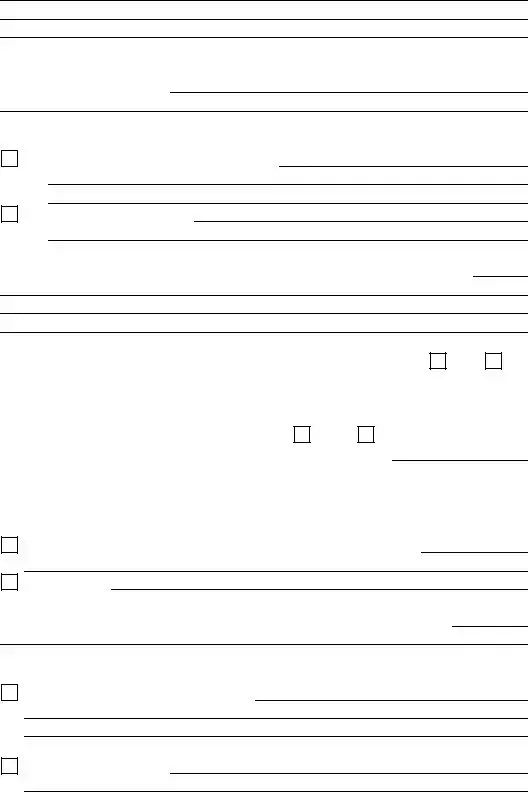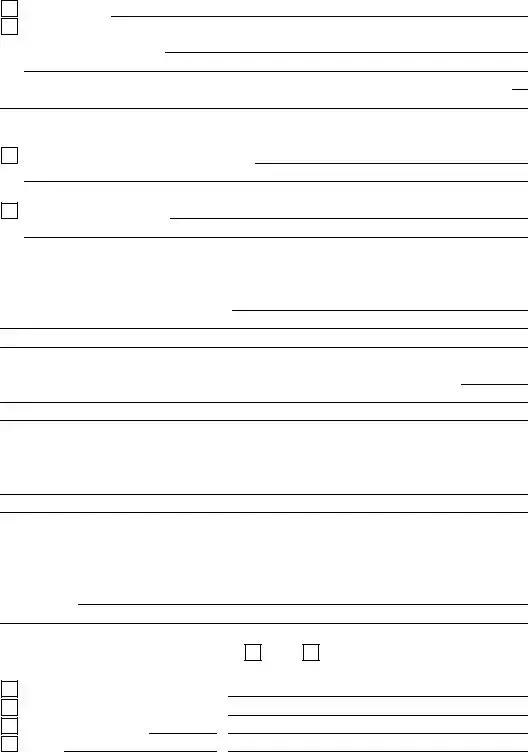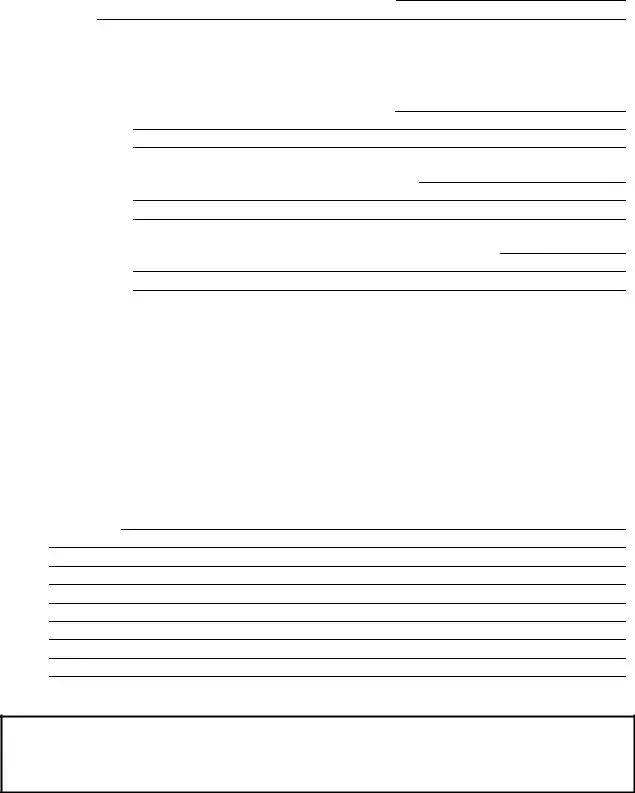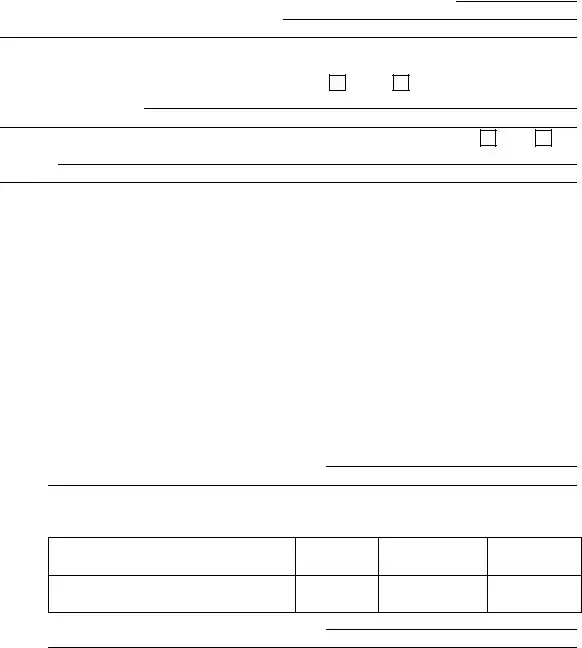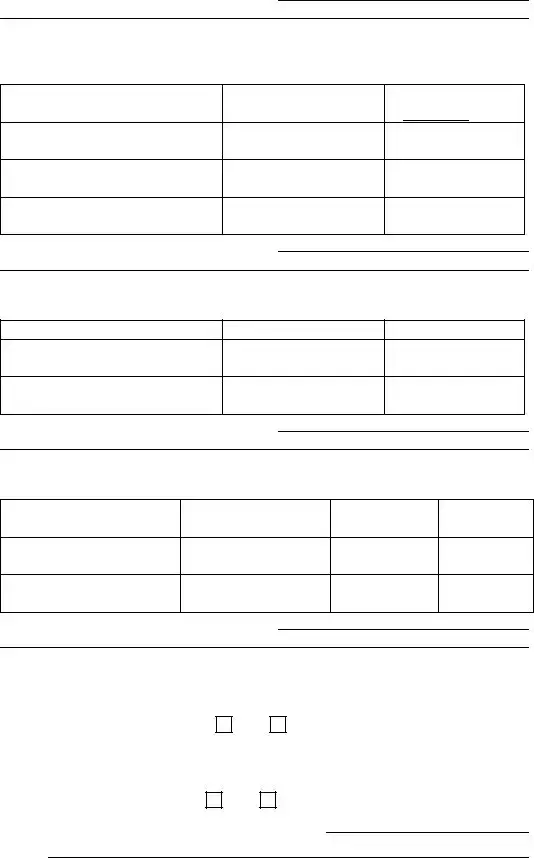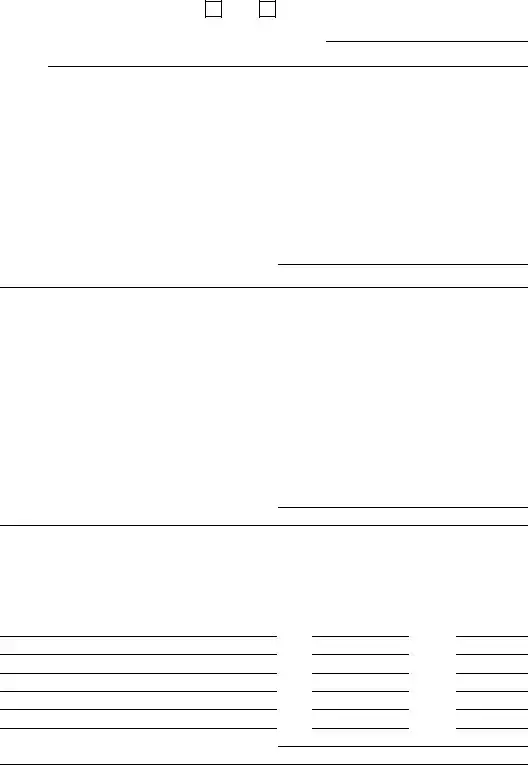
|
|
IN THE SUPERIOR COURT FOR THE STATE OF ALASKA |
|
|
|
|
|
AT____________________ |
In the Matter of the Protective Proceedings of: ) |
|
|
|
|
|
|
|
|
) |
|
|
|
Name of Ward: |
) |
|
|
|
|
|
|
|
|
|
) |
|
|
|
Date of Birth: |
) |
|
|
|
|
|
|
|
|
|
) |
|
|
|
Residential location of ward: |
) |
|
|
|
|
|
|
|
|
|
|
) |
|
|
|
|
|
|
|
|
) |
CASE NO. |
Ward’s Telephone #: |
) |
|
|
|
|
|
|
|
|
|
|
) |
GUARDIANSHIP ANNUAL REPORT |
Instructions
Please type or print clearly using black ink. In preparing the report, you must consult with the ward as much as possible. The court will treat the information in this report as confidential.
If you are unable to complete this form without help, you may find assistance on the website of the Office of Public Advocacy (OPA): www.state.ak.us/guardianship. Your local library and court may also have a binder of helpful information entitled “Family Guardian Education Materials,” prepared by the Alaska State Association for Guardianship and Advocacy. You may also call OPA at 269-3500 (in Anchorage), 451-5933 (in Fairbanks) or 1-877-957-3500.
After completing this report, you must sign it under oath (or affirmation) in the presence of a notary public or court clerk. See last page.
If you are a full guardian with the powers of a conservator, you must fill out the entire form. If you are a partial guardian and do not have the powers of a conservator (or if a separate conservator has been appointed), you do not need to fill out the financial information in paragraphs 10 through 16. The purpose of this report is to give the court as complete a picture as possible of the ward’s current situation and what has happened in the last 12 months.
|
|
Reporting Period |
|
|
|
|
This report covers the following period: From |
|
|
To |
|
|
|
|
|
|
|
|
|
|
Information About Guardian |
|
Guardian’s Name |
|
|
Daytime Phone |
|
Mailing Address |
|
|
|
|
|
|
|
(box or street number) |
(city) |
|
(state) |
(ZIP) |
Check here if this mailing address is new. If you change your address, please notify the court.
Residence Address
(street address)
Do you live with the ward? |
Yes |
Relationship to ward:
Page 1 of 13 |
Probate Rule 16(e)(1)(B), 16(e)(3) & 17(e) |
PG-210 (9/08)(cs) |
AS 13.26.118, .255, .380(b) & 13.06.100 |
GUARDIANSHIP ANNUAL REPORT |
|
|
|
|
|
|
In what areas do you have the authority to make decisions for the ward? |
housing |
medical care |
school & job training |
employment |
social & recreational activities |
financial management (you control ward’s finances because you have conservator powers)
Has a separate conservator been appointed for the ward?
If you are a private guardian charging fees, is there a court order authorizing payment of fees and establishing an hourly rate and maximum monthly amount as required by Probate Rule 16 and
AS 08.26.110? |
Yes |
No |
I do not charge fees. |
If you are a private professional guardian, do you have professional liability insurance?
Yes. (Attach copy of current Declarations page showing liability limits.) No.
|
Changes in Guardianship Needed |
|
Is there a current need for change in the guardianship? |
No |
|
If yes, explain: |
|
If you want the court to change its order, please file form PG-190.
If this is a Public Guardian appointment, is a suitable private guardian available?

 No
No 
 Yes
Yes
Information About Ward
1.Housing.
a.Where does the ward live now? Name of facility or place: Address:
|
(street address) |
|
(city) |
(state) |
(ZIP) |
|
Type of Residence: |
nursing home |
assisted living home |
|
|
b. |
Has the ward moved in the past year? |
Yes |
No |
If yes, explain: |
|
|
|
|
|
|
|
|
|
c. |
If the ward lives in your home, do you charge the ward rent? |
Yes |
|
If you live in the ward’s home, are you paying rent? |
Yes |
No |
d.Have you discussed the ward’s housing arrangement with the ward?
Yes. Explain what the ward wants:
|
No, because: |
|
|
|
|
|
Page 2 of 13 |
Probate Rule 16(e)(1)(B), 16(e)(3) & 17(e) |
PG-210 (9/08)(cs) |
AS 13.26.118, .255, .380(b) & 13.06.100 |
GUARDIANSHIP ANNUAL REPORT |
|
e.Do you plan to change the place where the ward lives?
If yes, explain why:
f.If the ward lives in a nursing home, assisted living home, group home or other
facility,
(1)Is this the least restrictive setting in which services can be provided to the
(2)Have you participated in developing the facility’s care plan for the ward?
Yes 
 No.
No.
(3)Do you believe the facility’s care plan is a good one for the ward (in the
ward’s best interests)? |
Yes |
No Explain: |
|
|
|
|
|
|
|
|
g.Are there any problems with providing meals, clothing, house cleaning or transportation for the ward?
2.Medical Care.
a.Which of the following medical professionals has the ward seen in the past 12
months?
Doctor’s Name |
Phone No. Dates Seen |
Medical Doctor
Dentist
Eye Doctor
Ear Doctor
Psychologist or
Psychiatrist
Other:
b.Describe any medical problems (physical or mental) the ward has, and describe what is being done or will be done about them:
Page 3 of 13 |
Probate Rule 16(e)(1)(B), 16(e)(3) & 17(e) |
PG-210 (9/08)(cs) |
AS 13.26.118, .255, .380(b) & 13.06.100 |
GUARDIANSHIP ANNUAL REPORT |
|
c.Describe any plans you have to change the care currently being provided for the ward’s medical problems:
d.Have you discussed these medical issues with the ward?
Yes. Explain what the ward wants:
No. Explain why not:
e.Are there any problems providing medical care or treatment for the ward?
f.Is a no-code (Do Not Resuscitate) provision in place for the ward?
g.Did the ward, while the ward still had the capacity to do so, execute a durable power of attorney for health care or some other advance health care directive
under AS 13.52.010 - .395 or another law? |
Yes |
No. If yes, who is the |
agent authorized to make health care decisions for the ward?
3.School and Job Training.
a.Does the ward attend school or any type of job training?
Yes. Describe studies (include name and location of school):
No, because:
b.Is there any type of education or training that would benefit the ward?
c. Have you discussed this with the ward? Yes. Explain what the ward wants:
No. Explain why not:
Page 4 of 13 |
Probate Rule 16(e)(1)(B), 16(e)(3) & 17(e) |
PG-210 (9/08)(cs) |
AS 13.26.118, .255, .380(b) & 13.06.100 |
GUARDIANSHIP ANNUAL REPORT |
|
4.Work.
a. Is the ward employed?
No, because:
Yes. Describe (include type of work, name of employer, address, phone, and how long employed):
b.If not employed, would it be in the ward’s best interests to obtain employment?
c. Have you discussed this with the ward? Yes. Explain what the ward wants:
No. Explain why not:
5.Social and Recreational Activities.
a.Describe activities the ward enjoys:
b.Have you been able to help make these activities available to the ward?
c.Do you have any plans concerning additional social and recreational activities for the ward?
6.Contacts With Ward.
a.If the ward does not live with you, how often have you visited the ward in the past 12 months?
|
|
|
|
|
b. |
Have there been any other contacts? |
No |
Yes, as follows: |
|
Type of Contact |
Frequency of Contact |
by telephone
by mail or e-mail through 3rd person: other:
Page 5 of 13 |
Probate Rule 16(e)(1)(B), 16(e)(3) & 17(e) |
PG-210 (9/08)(cs) |
AS 13.26.118, .255, .380(b) & 13.06.100 |
GUARDIANSHIP ANNUAL REPORT |
|
7.Decision Making.
a.Have there been any changes in the ward’s ability to make decisions about matters affecting the ward’s health and safety?
b.When a decision has to be made about something for the ward (housing, medical care, education, employment, recreation, purchases, etc.), how are the decisions made?
(1)Describe decisions made by ward alone:
(2)Describe decisions made by guardian alone:
(3)Describe decisions made by guardian and ward together:
8.Community Resources (service providers, churches, government programs, charitable
organizations, etc.). List the community organizations that are currently involved with the ward.
Name of Organization |
|
Services Received |
|
Agency Phone |
|
|
|
|
|
|
|
|
|
|
|
|
|
|
|
9.Significant Actions.
Describe any significant actions you have taken as guardian for the ward during the past
12 months:
You only have to fill out paragraphs 10 - 16 if you are a full guardian with authority to manage the ward’s finances. If you do not have financial management authority, skip to paragraph 17.
Page 6 of 13 |
Probate Rule 16(e)(1)(B), 16(e)(3) & 17(e) |
PG-210 (9/08)(cs) |
AS 13.26.118, .255, .380(b) & 13.06.100 |
GUARDIANSHIP ANNUAL REPORT |
|
10.Ward’s Annual Income. (List only the income of the ward during the 12–month reporting period. Do not list your income.)
Income Source |
Annual Amount |
Income Source |
Annual Amount |
Social Security Benefits: |
|
|
Wages: |
|
|
a. SSA: |
|
|
Dividends/Interest: |
|
|
b. SSI: |
|
|
Rental Income: |
|
|
Adult Public Assistance: |
|
|
Pension: |
|
|
Veterans Financial Benefits: |
|
|
Annuities: |
|
|
Alaska Longevity Bonus: |
|
|
Other (describe): |
|
|
Permanent Fund Dividend: |
|
|
|
|
|
|
Native Corporation Dividend: |
|
|
|
|
|
|
Total Annual Income: |
|
|
|
|
|
|
|
Total Annual Income During Previous Reporting Period:
Change in Annual Income Since Previous Reporting Period
Explain any difference more than $1000:
11.Ward’s Annual Expenses. (Money paid to anyone on behalf of ward or ward’s legal dependents. Do not include your personal expenses. Attach extra pages if necessary.)
Expense |
Description |
|
Annual Amount |
Nursing/ Assisted Living Home: |
|
|
|
Rent Payment: |
|
|
|
Mortgage Payment: |
|
|
|
Utilities: |
|
|
|
Transportation: |
|
|
|
Medical Treatment Costs |
|
|
|
Medications: |
|
|
|
Credit Card Payments: |
|
|
|
Food: |
|
|
|
Clothing: |
|
|
|
Recreation or Entertainment: |
|
|
|
Personal Expenses (include allowance): |
|
|
|
Income Tax & Property Tax: |
|
|
|
|
Home/Property Maintenance Costs: |
|
|
|
Insurance |
|
|
|
Home Insurance: |
|
|
|
Auto Insurance: |
|
|
|
Medical Insurance: |
|
|
|
Life Insurance: |
|
|
|
Gifts: |
|
|
|
Child/Spousal Support: |
|
|
|
Fees/Costs Paid to Guardian: |
|
|
|
Other (list all other payments made): |
|
|
|
Total Annual Expenses: |
|
|
|
|
|
|
Total Annual Expenses During Previous Reporting Period: |
|
|
Page 7 of 13 |
Probate Rule 16(e)(1)(B), 16(e)(3) & 17(e) |
PG-210 (9/08)(cs) |
AS 13.26.118, .255, .380(b) & 13.06.100 |
GUARDIANSHIP ANNUAL REPORT |
|
|
|
Change in Annual Expenses Since Previous Reporting Period Explain any difference more than $1000:
12.Money Controlled By Ward.
Does the ward have sole control over any money? If yes, please explain:
Is this money included in the income and expenses listed in #10 and #11? Explain:
13. |
Ward’s Assets at the end of this Reporting Period (Date: |
|
|
|
) |
|
|
(List all assets the ward owns individually or jointly. Attach extra pages if necessary.) |
|
|
a. |
Cash on hand (not in an account) $ |
|
|
|
|
|
|
|
|
|
|
|
|
|
(amount) |
|
(where located) |
|
|
|
Explain any changes in the last 12 months: |
|
|
|
|
|
|
b. |
|
|
|
|
|
|
|
|
|
|
|
Burial Account |
|
|
|
|
|
|
|
|
|
|
|
|
|
|
|
|
|
|
|
|
|
Name of Bank or Institution |
|
Type of |
|
Account |
Balance |
|
|
|
|
Account |
|
Number |
|
|
|
|
|
|
|
|
|
|
|
|
|
|
|
|
|
|
|
|
|
Explain any changes in the last 12 months:
c.Alaska Native Corporation Dividend Account
Name of Bank or Institution
Explain any changes in the last 12 months:
d.List all other bank accounts, certificates of deposit, etc. Attach the most recent bank statement. Attach additional pages if necessary.
|
Name of Bank or Institution |
Name(s) on |
Account |
Balance |
|
Account |
Number |
|
|
|
|
|
|
|
|
|
|
|
|
|
|
|
|
|
|
Page 8 of 13 |
Probate Rule 16(e)(1)(B), 16(e)(3) & 17(e) |
PG-210 (9/08)(cs) |
AS 13.26.118, .255, .380(b) & 13.06.100 |
GUARDIANSHIP ANNUAL REPORT |
|
Explain any changes in the last 12 months:
e.List all Brokerage Accounts, Stocks, Bonds, and Other Securities. Attach the most recent account statement. Attach additional pages if necessary.
Explain any changes in the last 12 months:
f.Retirement Accounts.
Explain any changes in the last 12 months:
g.Ward’s Life Insurance Policies (policies the ward owns).
Beneficiary of Life
Insurance
Face Value of Life Insurance
Explain any changes in the last 12 months:
h.Real Estate that Ward Owns (land and buildings). Attach tax assessment, if available.
|
|
|
|
|
|
|
(1) |
Does ward own a home? |
No |
Yes. Estimated Value: $ |
|
Address: |
|
|
|
|
|
Description: |
|
|
|
|
|
Is there a joint owner? |
No |
Yes |
Explain any changes in the last 12 months:
Page 9 of 13 |
Probate Rule 16(e)(1)(B), 16(e)(3) & 17(e) |
PG-210 (9/08)(cs) |
AS 13.26.118, .255, .380(b) & 13.06.100 |
GUARDIANSHIP ANNUAL REPORT |
|
|
|
|
|
|
|
|
(2) |
Other Real Estate. |
|
Estimated Value: $ |
|
Address: |
|
|
|
|
|
Description: |
|
|
|
|
|
Is there a joint owner? |
No |
Yes |
Explain any changes in the last 12 months:
i.Vehicles. (List any cars, boats, snow machines, off-road vehicles, airplanes, etc.)
Type of Vehicle |
|
Year, Make & Model |
|
Value |
|
Co-Owner |
|
|
|
|
|
|
|
|
|
|
|
|
|
|
|
|
|
|
|
|
|
|
|
|
|
|
|
|
|
|
|
|
|
|
|
Explain any changes in the last 12 months:
j.Furniture, Appliances and Electronic Equipment exceeding $400 in value. Attach additional pages if necessary.
Description of Item |
|
Approximate Age |
Value |
|
|
|
|
|
|
|
|
|
|
|
|
|
|
|
|
|
|
|
|
|
|
|
|
|
|
|
|
|
|
Explain any changes in the last 12 months:
k.Jewelry, Gems, Precious Metals, Coin or Stamp Collections, Other Collections, Artwork, Raw or Decorated Ivory. Attach additional pages if
necessary. |
|
|
Description of Item |
Location |
Value |
Explain any changes in the last 12 months:
Page 10 of 13 |
Probate Rule 16(e)(1)(B), 16(e)(3) & 17(e) |
PG-210 (9/08)(cs) |
AS 13.26.118, .255, .380(b) & 13.06.100 |
GUARDIANSHIP ANNUAL REPORT |
|

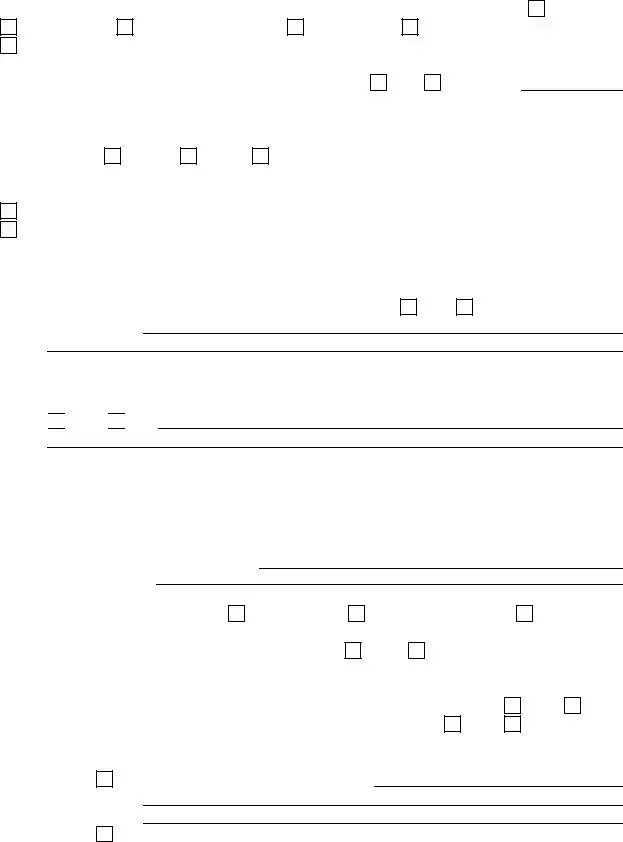

 No
No 
 Yes
Yes

 No.
No.